Transforming Outdoor Spaces: Landscape Gardening in Barking
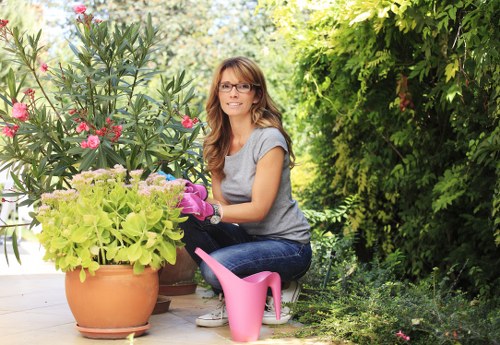
Introduction to Landscape Gardening
Landscape gardening is an art and science that combines creativity with horticultural knowledge to create beautiful and functional outdoor spaces. In Barking, where urban living meets suburban tranquility, landscape gardening plays a vital role in enhancing the aesthetic appeal and environmental quality of homes and public areas.
Whether you're looking to redesign your garden, create a sustainable outdoor space, or simply add some greenery to your property, understanding the fundamentals of landscape gardening in Barking can help you achieve your goals.
From selecting the right plants to designing captivating layouts, this article explores the various aspects of landscape gardening tailored specifically for the Barking area.
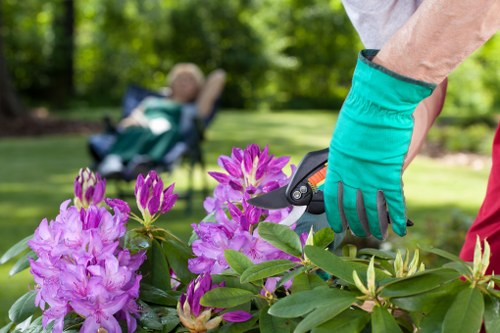
Why Choose Landscape Gardening in Barking?
Barking, with its unique climate and soil conditions, offers a distinctive environment for gardening enthusiasts. The area's temperate weather, combined with its mix of urban and green spaces, makes it an ideal location for diverse gardening projects.
Moreover, landscape gardening in Barking contributes to improved air quality, reduced noise pollution, and enhanced property values. By investing in thoughtful garden design, residents can create serene retreats amidst the bustling city life.
Additionally, landscape gardening promotes biodiversity, providing habitats for local wildlife and supporting ecological balance in the region.
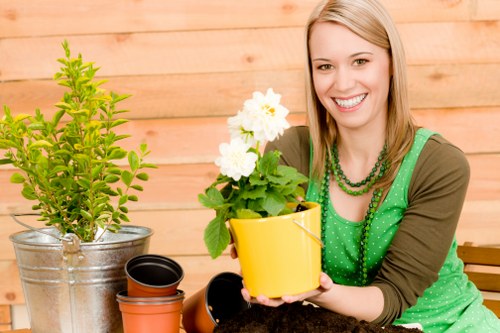
Planning Your Landscape Garden
Assessing Your Space
Before embarking on a landscape gardening project, it's essential to assess the available space. Consider factors such as sunlight exposure, soil quality, and existing structures. This evaluation will guide your plant selection and layout design.
Sunlight: Determine how much sun your garden receives daily. Different plants thrive in varying light conditions, so understanding this will help you choose the right flora.
Soil Quality: Conduct a soil test to identify pH levels and nutrient content. Barking's soil can vary, and amending it as needed ensures healthy plant growth.
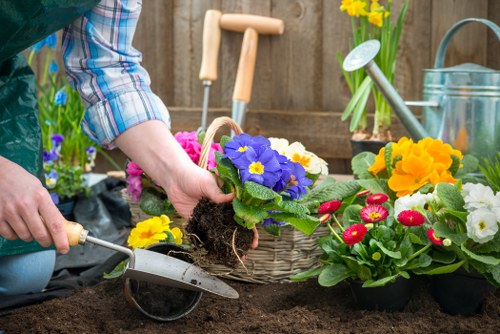
Designing Your Garden Layout
Creating a harmonious garden layout involves balancing aesthetics with functionality. Incorporate elements like pathways, seating areas, and water features to enhance the space.
Pathways: Strategically placed walkways guide visitors through your garden, highlighting key features and ensuring easy navigation.
Water Features: Adding ponds or fountains can create a soothing ambiance and attract wildlife, contributing to the garden's overall charm.
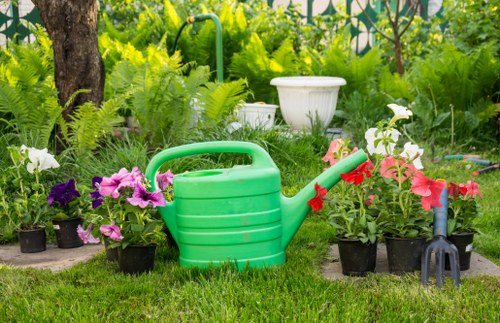
Choosing the Right Plants for Barking Gardens
Native Plants
Opting for native plants is a sustainable choice that supports local ecosystems. Native species are well-adapted to Barking's climate, requiring less maintenance and water.
- Lavender: Known for its fragrance and resilience.
- Hydrangeas: Offer vibrant blooms in various colors.
- Boxwood: Ideal for creating neat hedges and borders.

Seasonal Plants
Incorporating seasonal plants ensures your garden remains lively throughout the year. Each season brings unique blooms and foliage that enhance the garden's visual appeal.
- Spring: Tulips and daffodils herald the season with bright colors.
- Summer: Roses and sunflowers thrive in the warm months.
- Autumn: Chrysanthemums and ornamental grasses add texture.
- Winter: Evergreen shrubs and holly provide structure.

Implementing Sustainable Practices
Water Conservation
Sustainable landscape gardening emphasizes efficient water use. Implementing drip irrigation systems and rainwater harvesting can significantly reduce water consumption.
Mulching: Applying mulch helps retain soil moisture, suppress weeds, and regulate soil temperature.
Rainwater Harvesting: Collecting rainwater from rooftops provides a natural water source for your garden, reducing reliance on municipal water.

Organic Gardening
Organic gardening practices avoid synthetic fertilizers and pesticides, promoting a healthier environment. Using compost and natural pest control methods nurtures plant growth while protecting beneficial insects.
- Composting: Recycling kitchen and garden waste enriches the soil with essential nutrients.
- Natural Pest Control: Introducing predatory insects like ladybugs helps manage pest populations organically.
- Crop Rotation: Changing plant positions annually prevents soil depletion and reduces disease risks.

Enhancing Garden Aesthetics
Lighting
Garden lighting not only illuminates pathways but also highlights key features like sculptures and water elements. Solar-powered lights are an eco-friendly option that reduces electricity usage.
Types of Lighting: Incorporate a mix of ambient, task, and accent lighting to create a layered and inviting atmosphere.
Placement: Strategically placing lights ensures safety while enhancing the garden's nighttime beauty.

Garden Structures
Adding structures like pergolas, arbors, and gazebos provides focal points and functional spaces for relaxation and gatherings.
Pergolas: Perfect for creating shaded walkways or seating areas adorned with climbing plants.
Gazebos: Ideal for outdoor entertaining and offering shelter from the elements.

Maintenance Tips for Barking Gardens
Regular Pruning
Pruning ensures plants remain healthy and aesthetically pleasing. Removing dead or overgrown branches promotes better air circulation and encourages robust growth.
- When to Prune: Timing varies by plant species; research individual requirements.
- Tools: Use sharp, clean tools to make precise cuts and prevent disease transmission.
- Techniques: Learn proper pruning techniques to avoid damaging plants.

Weeding and Soil Care
Regular weeding prevents competition for nutrients, allowing your plants to thrive. Additionally, maintaining soil health through aeration and fertilization supports long-term garden vitality.
Aeration: Gently loosening the soil enhances root growth and water penetration.
Fertilization: Apply organic fertilizers to replenish soil nutrients without harming the environment.

Seasonal Gardening in Barking
Spring Maintenance
Spring is the perfect time to prepare your garden for the growing season. Start by cleaning up debris, planting new flowers, and applying mulch to protect against early blooms.
- Seed Planting: Sow seeds for annuals to add vibrant colors to your garden.
- Soil Testing: Check and adjust soil pH levels as needed.
- Pest Control: Address any early pest issues before they escalate.

Summer Care
During summer, focus on watering, shading, and pest management. Ensure plants receive adequate moisture and protect them from excessive heat to maintain their health.
Watering Schedule: Water early in the morning to reduce evaporation and fungal growth.
Shade Solutions: Use shade cloths or plant strategically to shield sensitive plants from intense sunlight.

Autumn Preparation
As temperatures drop, prepare your garden for winter by planting bulbs, harvesting remaining crops, and pruning perennials. This helps your garden stay healthy and ready for the next growing season.
- Bulb Planting: Plant spring-flowering bulbs like tulips and daffodils.
- Leaf Management: Rake fallen leaves to prevent mold and pests.
- Final Harvest: Collect last-season vegetables and fruits before frost.

Winter Care
During winter, focus on protecting plants from frost and cold winds. Mulch heavily, cover sensitive plants, and ensure that drainage systems are clear to prevent waterlogging.
Mulching: A thick layer of mulch insulates plant roots against freezing temperatures.
Protective Covers: Use burlap or frost blankets to shield delicate plants from harsh weather.

Hiring Professional Landscape Gardeners in Barking
Benefits of Professional Services
Engaging professional landscape gardeners in Barking ensures expert design, installation, and maintenance of your outdoor space. Professionals bring experience, creativity, and efficiency to transform your garden vision into reality.
- Expert Advice: Professionals provide valuable insights on plant selection and garden design.
- Quality Execution: Skilled gardeners ensure precise implementation of your garden plans.
- Time-Saving: Hiring experts frees up your time, allowing you to enjoy your garden without the hassle of upkeep.

Choosing the Right Gardener
Selecting the right landscape gardener involves assessing their experience, portfolio, and client reviews. Look for professionals who understand Barking's unique gardening needs and can tailor their services accordingly.
Experience: Ensure the gardener has a proven track record in landscape gardening.
Portfolio: Review previous projects to gauge their design style and quality.

Cost Considerations
Landscape gardening costs can vary based on project scope, plant selection, and additional features. Obtain detailed quotes and compare services to find a gardener that fits your budget without compromising quality.
- Budget Planning: Define your budget beforehand to guide your project choices.
- Transparent Pricing: Choose gardeners who provide clear and comprehensive estimates.
- Value for Money: Consider the long-term benefits of investing in quality landscaping.

Conclusion: Enhancing Barking with Beautiful Gardens
Landscape gardening in Barking offers endless possibilities to create stunning and sustainable outdoor spaces. By understanding the local environment, choosing the right plants, and implementing thoughtful design principles, you can transform your garden into a sanctuary that reflects your style and supports the ecosystem.
Whether you opt for DIY gardening or enlist professional help, the rewards of a well-maintained garden are immeasurable. Embrace the art of landscape gardening in Barking and enjoy the beauty and tranquility it brings to your life.
Ready to transform your outdoor space? Contact us today to start your landscape gardening journey in Barking!
Frequently Asked Questions
Get In Touch With Us.
Please fill out the form below to send us an email and we will get back to you as soon as possible.

